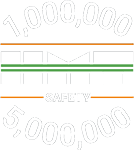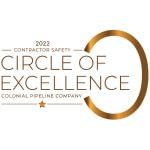By Allie Alderson, Director of Sustainability and Marketing
March 22, 2023
Why the Industry Must Help Shape Aboveground Storage Tank Legislation in Texas
In 2019, an incident took place in Deer Park, Texas that would be any aboveground petroleum storage tank owner’s worst nightmare. A massive petrochemical fire broke out at Intercontinental Terminals Company after a refinery terminal leaked flammable substances, then exploded and spread fire to surrounding tanks that burned for three days.
The disaster got the attention of the industry – and also of Texas regulators and policymakers, who recognized the need to put a state enforcement mechanism in place to help prevent tank explosions and the release of hazardous substances. Three years later, a Texas Senate bill (SB 900) is in the works that would set up a new system of regulation. It’s promising – but the industry needs to step in to make sure that new regulations truly benefit public safety, the environment, and tank owners and operators alike.
This may prove to be difficult on the regulatory side because of overlaps with the numerous federal regulations and industry standards that apply to the construction and performance of these particular types of tanks. To help bring clarity to the industry, I recently co-hosted a panel discussion for the National Institute for Storage Tank Management (NISTM) comprised of the Texas Commission on Environmental Quality (TCEQ) bill authors along with co-moderators Earl Crochet from Crochet Midstream Consulting and Marshall Mott-Smith from Mott-Smith Consulting Group.
In this article, we’ll discuss considerations for this important legislation affecting aboveground storage tanks in Texas as the bill comes together. In upcoming articles, we’ll share takeaways from the TCEQ panelists in response to the most common questions they were asked about the new rule and how it might impact operations – as well as the rule’s final language.
Impact of SB 900 on Tank Owners and Operators
How will SB 900 better equip facilities to operate safely in the event of accidents or natural disasters? The bill directs TCEQ to create a Bulk Storage Vessels Performance Standards Program and corresponding rules that will provide direction for the construction of new tanks and safety standards on all tanks, including the use of remote shut off valves, overfill prevention, and fire suppression technology.
The tanks that will be regulated by SB 900 – known as Bulk Storage Vessels, per a new narrowly tailored definition in the Water Code (26.3442) – are those with a capacity of 21,000 gallons or more, that are located at a petrochemical plant or petroleum refinery, and carrying certain hazardous materials.
To comply, physical alterations to existing tanks must be done either at the next regularly scheduled out-of-service maintenance period, or by September 1, 2037, whichever is first. Any new tanks constructed after September 1, 2027 must conform to the latest national consensus standards. These include the American Petroleum Institute (API) 653: Aboveground Storage Tank Inspector, API 2350: Overfill Prevention for Storage Tanks, National Fire Protection Association (NFPA) 30 or API 2001: Fire Protection, API 650: Welded Tanks for Oil Storage, and NFPA 30 location standards.
Lessons Learned from Florida Department of Environmental Protection Regulation
Other states have taken similar actions that Texas can look to for examples. When the Florida Department of Environmental Protection (FDEP) recognized the need to protect the underground potable water sources that supply 92% of the state’s drinking water, Florida lawmakers passed legislation to regulate aboveground storage tank systems in 1983.
As part of the regulatory program, the FDEP’s deadline for upgrading existing aboveground single-wall storage tank systems with secondary containment was January 1, 2010. Today, 99% of facilities in Florida have met this requirement for the nearly 24,000 regulated aboveground storage tanks – they have double-bottoms or secondary containment or are single-wall tanks with release prevention barriers beneath the tank. What’s been the impact? The requirement for secondary containment has significantly minimized risk. In the early 1990s, Florida had almost 400 releases per month. Since January 1, 2010, releases have been reduced to about 100 discharges per year.
Among the lessons learned from this Florida example are the fact that regulations must be practical and achievable, and that compliance rather than enforcement must be the goal. Industry personnel also had to step in and shape the legislation, since they have the expertise that regulators do not – which will be equally crucial for achieving success with SB 900.
Recommendations for Texas Commission on Environmental Quality
A few of the guidelines recommended to TCEQ as it develops this new program are as follows.
- Create a Technical Advisory Committee to assist with developing agency rules and policies.
- Carefully consider the selection of the implementing agency.
- Forgo a central command and control agency in favor of the local level. Contract compliance activities to County Environmental agencies and manage them like a business entity that focuses on performance.
- To help with paperwork reduction, only require essential information that assists with program management and implementation and use software that implements consistency.
- Rely on industry reference standards in the administrative rules.
- Learn from the 30 states and regulators that have successful, existing programs.
- Get the regulators and managers out in the field to inspect facilities, to help them learn the technology and get a perspective of reality.
- Focus on performance and results. Florida cut back on the budget and number of inspectors after all facilities had secondary containment because the risk was so well minimized.
- Regulate the entire system, not just the tank. Piping is often more of a risk than the tanks.
- Put an agency emphasis on compliance, while still implementing an expedient and responsible enforcement process to get non-responders to comply.
- Develop reasonable compliance deadlines that give the industry time to comply.
- Remember that legislation always needs revision and put a process in place to manage it.
The conversation about the final form of the rule is ongoing. But the time for the industry to engage with the rulemaking process is now. TCEQ has until September 2023 to write and promulgate the rules for SB 900, so there is still ample time for input. We encourage tank owners and operators to submit written comments so that your voice is heard.
Now that you are more familiar with SB 900, stay tuned for our next article to learn how you can avoid any unnecessary outages to put your tanks in compliance after the rule is posted.


